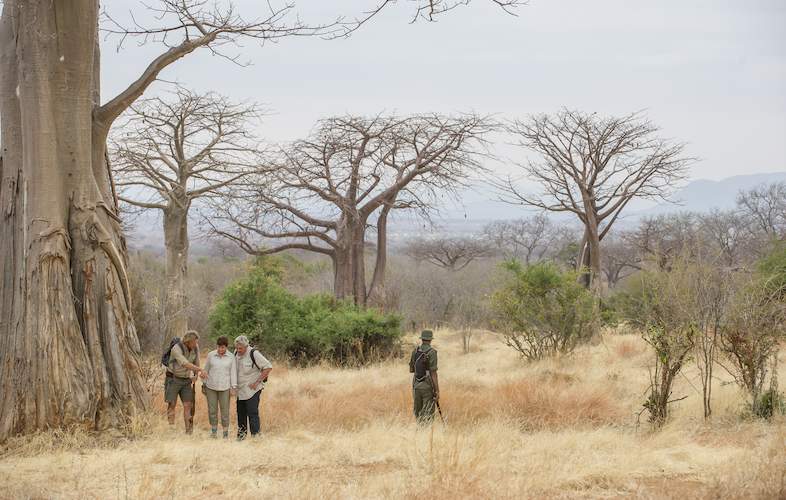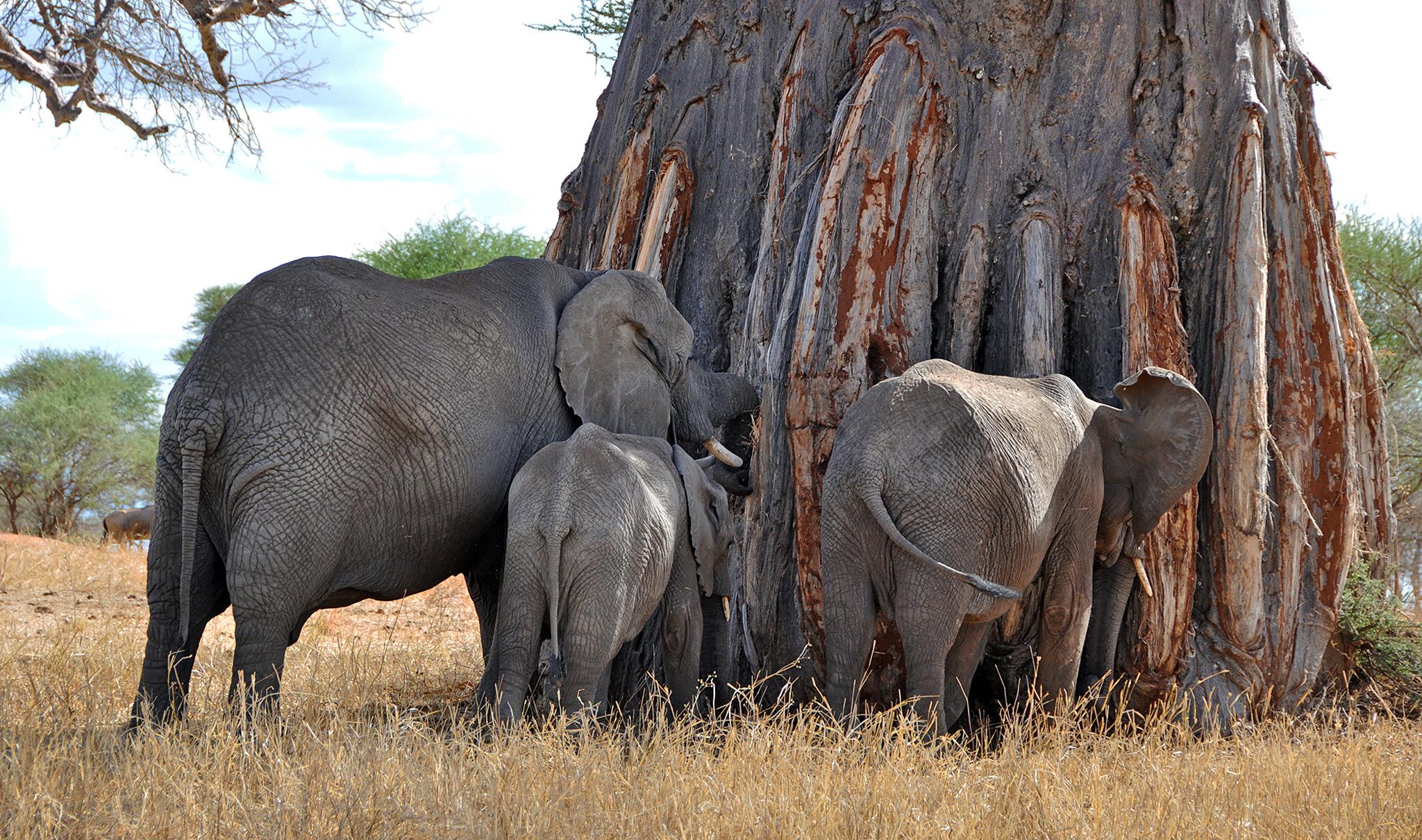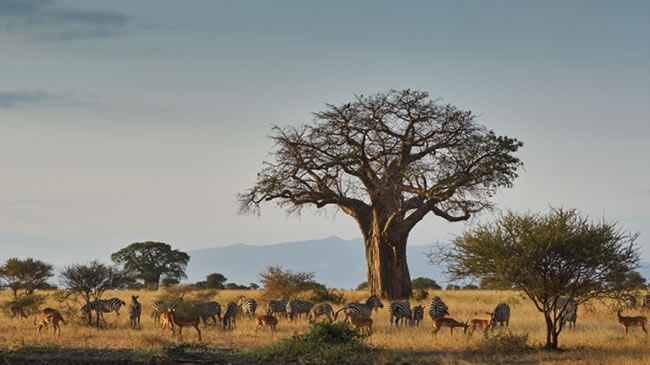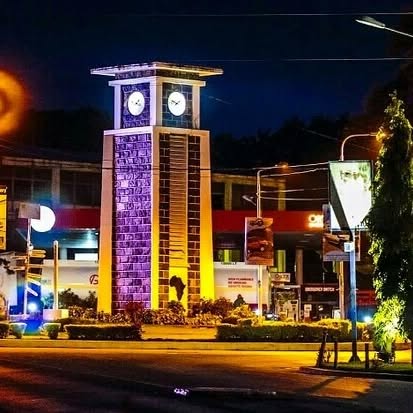What Secrets Do the Ancient Baobabs of Tarangire Hold?
Baobab Trees of Tarangire
Tarangire National Park, is renowned for its stunning landscapes and rich biodiversity. One of the park’s most iconic feature are the majestic baobab trees (Adansonia digitata). These unique trees notably known as the “trees of life” are not only striking in appearance but also play vital ecological, cultural, and economic roles in this diverse park. Baobab trees are not just a remarkable feature of Tarangire National Park; they embody the intersection of natural beauty, cultural heritage, and economic opportunity. Their presence enriches the park’s biodiversity, supports local traditions, and enhances the tourism experience, making them an essential component of the region’s identity and ecological health. As such, they play a vital role in promoting sustainable tourism and conservation efforts in Tanzania due to their native ability to store water reaching approximately 100,000 litres.
What Are the Unique Features of Baobab Trees in Tarangire?
-
Distinctive Appearance
Baobabs are instantly recognizable thanks to their massive, swollen trunks and stubby, root-like branches that stretch toward the sky, giving them that signature “upside-down tree” look. In Tarangire, these ancient trees stand like silent giants across the savannah, their gray bark contrasting with the golden grasslands. Some trunks can grow up to 10 meters (33 feet) in diameter, making them look like natural monuments sculpted by time.
During the dry season, they lose all their leaves, making their silhouette even more dramatic against the African sunset. Their shape isn’t just for show, it’s also practical, helping them store water and survive extreme drought. They can grow to be quite large, with some specimens being over a thousand years old.
-
Longevity
Baobabs are among the oldest living trees on Earth, with some estimated to be over 6,000 years old. They’ve stood through centuries of seasonal changes, migrations, and even the rise and fall of civilizations, making them true witnesses of time. Their trunks grow wider with age, not taller, and older trees often have hollow interiors, naturally formed over centuries.
Despite their ancient status, baobabs are surprisingly resilient, surviving harsh climates, drought, and even bushfires, living proof of nature’s endurance.
-
Water Storage
One of the most remarkable features of the baobab tree is its ability to store massive amounts of water in its thick, fibrous trunk, up to 120,000 liters (over 30,000 gallons) in some of the oldest and largest specimens!. This adaptation is crucial in Tarangire, where long dry seasons dominate the landscape. The stored water helps the tree survive months without rain, and even supports wildlife in desperate times. Elephants are often seen peeling off the bark or digging into the trunk to access this hidden hydration source.
In Tarangire National Park these trees of life play a significant role as a water source to elephants and other wild animals as they dwell water at their barks when the park undergoes through a dry season with scarcity of water.
-
Unique Ecosystem
The baobab tree in Tarangire National Park serves as a unique ecosystem, hosting a diverse range of wildlife and plant life within and around its massive trunk. Birds such as hornbills and owls nest in its hollows, bats roost inside, and bees create natural hives that produce wild honey. Its nutrient-rich fruit feeds baboons, elephants, and antelope, while herbivores also rely on its leaves and bark during dry seasons. Even mosses and lichens thrive on its bark, creating microhabitats. Beyond wildlife, the baobab also supports local communities by providing food, traditional medicine, and shelter—making it not just a tree, but a vital hub of life in the savannah.
What is the significance of baobab trees in relation to Tarangire National Park?
Baobab Trees in Tarangire National Park has both natural, cultural and Economic significances as highlighted below;
1:Natural Significance
- Biodiversity Hotspot
The baobab trees in Tarangire National Park are integral to the park’s status as a biodiversity hotspot. These ancient giants provide a unique ecosystem that supports a wide array of species, from birds and bats to herbivores and insects. Their hollow trunks serve as nests and shelters for various animals, while their fruit nourishes a range of wildlife, including elephants and monkeys. In addition, baobabs act as water reserves during dry periods, sustaining both flora and fauna. This tree species plays a crucial role in maintaining the health and balance of the park’s ecosystem, contributing to the rich biodiversity that defines Tarangire.
- Habitat Creation
Baobab trees in Tarangire National Park play a critical role in habitat creation for a wide variety of species. Their massive trunks and hollow interiors provide shelter and nesting sites for birds, bats, and insects, creating a safe haven for many creatures. The fruit produced by the baobab serves as a nutrient-rich food source for various herbivores, including monkeys, baboons, and elephants, especially during dry seasons. The tree’s leaves and bark are also utilized by herbivores, further enriching the park’s food chain.
2:Cultural Significance
- Symbol of Life
In many African cultures, baobab trees are seen as symbols of life and community. They are often associated with folklore and traditions, serving as gathering places for communities.
- Traditional Uses
The baobab tree has numerous traditinal uses, including:
-
- Fruit: The nutrient-rich baobab fruit is used in traditional medicine and culinary applications. It is rich in vitamin C and antioxidants.
- Leaves: The leaves can be consumed as vegetables or used to make herbal remedies.
- Bark: The bark is sometimes used to create ropes, mats, and other crafts.

3:Economic and Significance
- Tourist Attraction: The unique beauty of baobab trees makes them a major draw for tourists visiting Tarangire National Park. Photographers and nature enthusiasts flock to the park to capture the stunning landscapes featuring these iconic trees.
- Cultural Experiences: Guided tours often include stories about the baobab’s significance in local culture, providing visitors with a deeper understanding of the ecosystem and its inhabitants.
- Sustainable Practices: Promoting the baobab’s ecological and cultural importance can help foster sustainable tourism practices. This includes supporting local communities through responsible tourism initiatives that focus on conservation and education.

The majestic baobab trees of Tarangire National Park are more than just natural wonders, they are timeless symbols of life, deeply rooted in the park’s ecology, culture, and beauty. From serving as water reservoirs and wildlife habitats to being cultural landmarks for local communities, these trees reflect the incredible richness of Tarangire’s landscape. Exploring the baobabs is not just a visual experience, but a journey into the heart of Tanzania’s wild heritage.
For a truly immersive and luxurious experience, consider booking your adventure with Afrima Luxury Travel. Their full tour packages offer expertly curated itineraries that connect you with the magic of Tarangire, including up-close encounters with its iconic baobabs, abundant wildlife, and breathtaking scenery, all while enjoying world-class comfort and personalized service. Let Afrima Luxury Travel turn your safari dreams into unforgettable memories.







